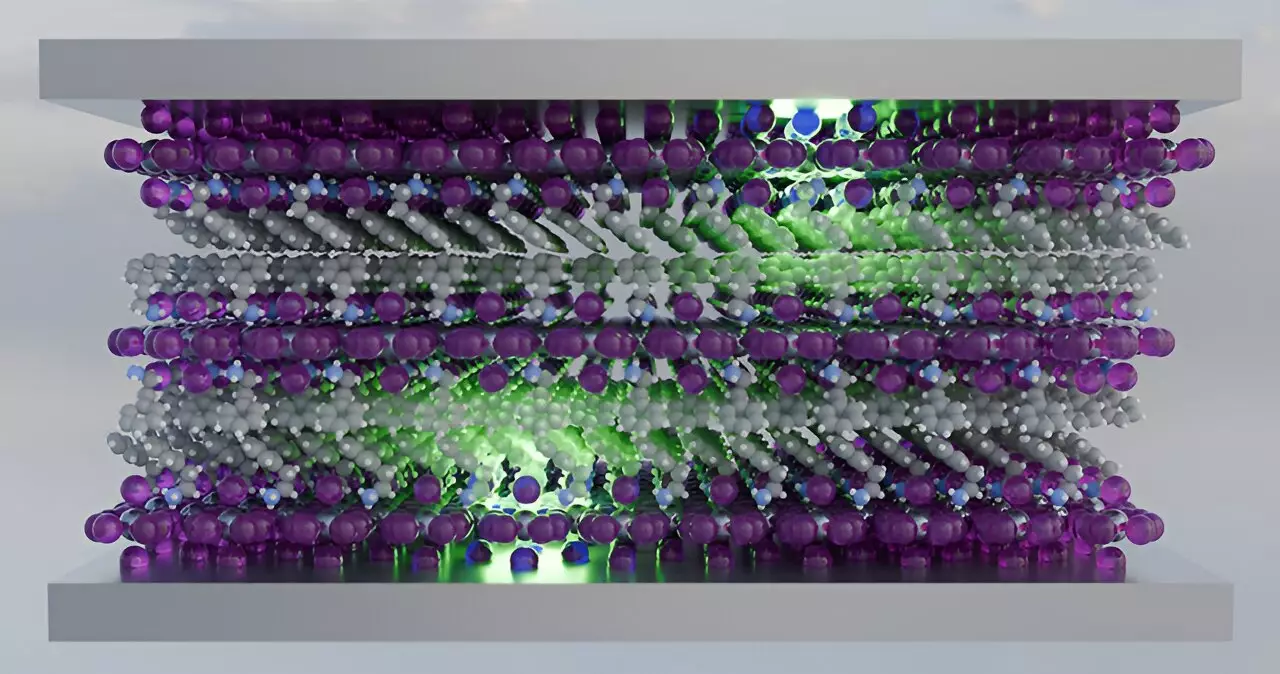In the realm of solar cells and light-emitting diodes, the race against time to maintain the excited state kinetics of molecules is a critical challenge. With various processes at play that can lead to energy loss or the desired outcome, finding a balance is essential for maximizing efficiency. One major hurdle in achieving this goal is exciton-exciton annihilation, which can significantly reduce solar efficiency and light output in LEDs. Researchers at the National Renewable Energy Laboratory (NREL) and the University of Colorado Boulder have embarked on a mission to control exciton/exciton annihilation by integrating excitons with cavity polaritons to combat energy dissipation and potentially increase efficiency in optoelectronic devices.
Using transient absorption spectroscopy, the researchers demonstrated in the Journal of Physical Chemistry Letters the ability to manipulate the loss mechanism by adjusting the distance between two mirrors that enclose a 2D perovskite (PEA)2PbI4 (PEPI) layer. The PEPI material shows promise for future LED applications, making it a focal point for the study. By observing ultrastrong coupling of the PEPI layer in a Fabry-Pérot microcavity with partially-reflective mirrors, the researchers achieved a longer excited state lifetime and gained control over exciton-exciton annihilation, reducing the loss process significantly.
The concept of strong coupling between photonic and electronic states creates hybrid states known as polaritons, which combine characteristics of light and matter. In this case, the quantum nature of the hybrid states allows for rapid shifting between photonic and excitonic properties. This ‘phasing’ effect enables polaritons to pass through each other without annihilation, depending on their predominant state at the moment of interaction. By adjusting the coupling strength, researchers can control the amount of time polaritons spend as photons, thereby influencing energy loss in the system.
The findings of this study offer a new perspective on how controlling exciton-exciton annihilation can lead to significant improvements in the efficiency of solar cells and LEDs. By harnessing the power of strong coupling effects, researchers have unlocked a potential pathway to enhance the performance of optoelectronic devices. This research paves the way for future advancements in the field of renewable energy and solid-state lighting.
Through a series of experiments utilizing cavity polaritons and transient absorption spectroscopy, researchers have made strides in understanding and controlling exciton-exciton annihilation in optoelectronic devices. The ability to manipulate the dynamics of excited states opens up new possibilities for increasing efficiency and reducing energy losses in solar cells and LEDs. As the quest for improved energy technologies continues, the insights gained from this research will play a crucial role in shaping the future of sustainable energy solutions.


Leave a Reply